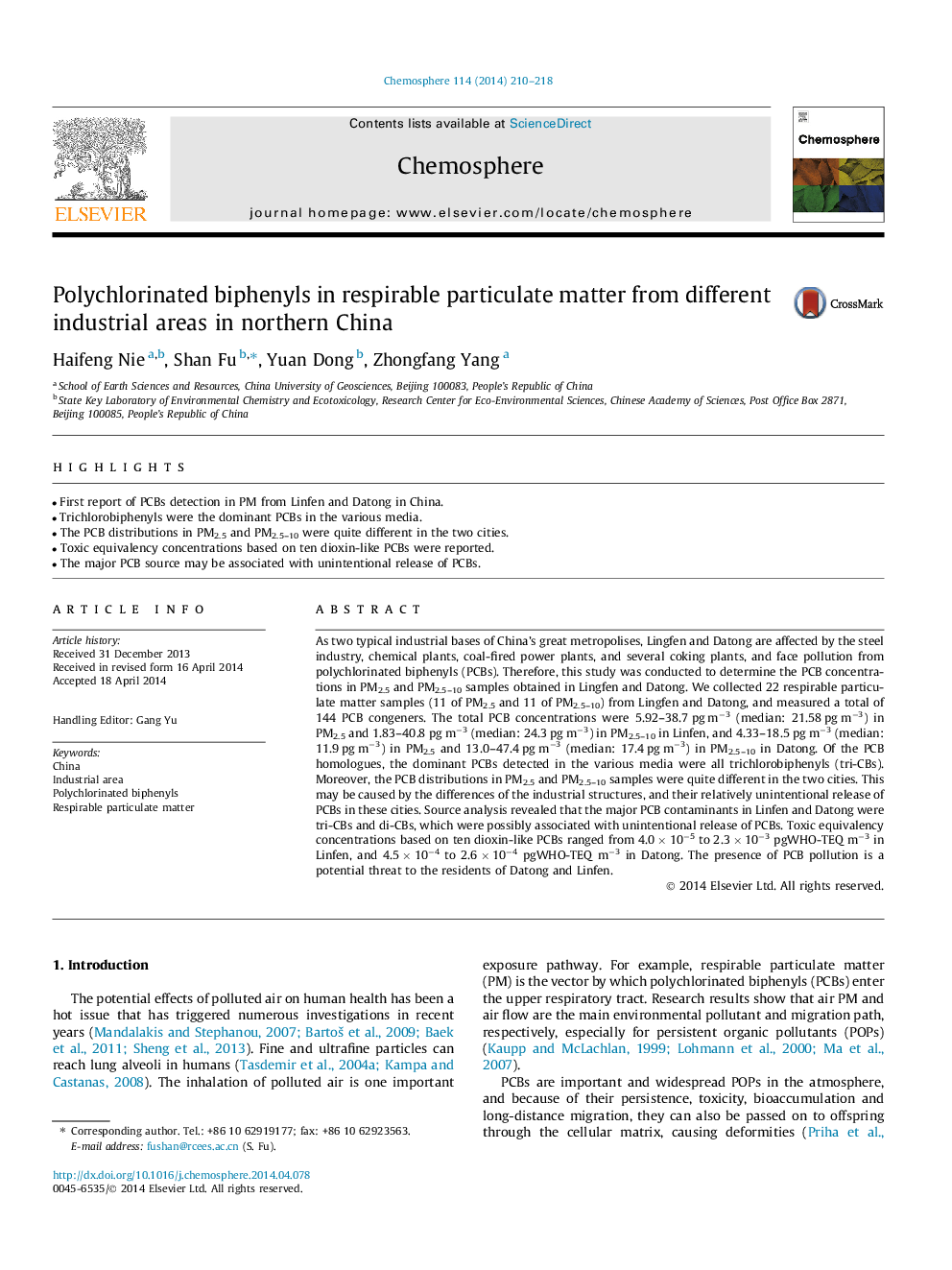| Article ID | Journal | Published Year | Pages | File Type |
|---|---|---|---|---|
| 6308955 | Chemosphere | 2014 | 9 Pages |
Abstract
As two typical industrial bases of China's great metropolises, Lingfen and Datong are affected by the steel industry, chemical plants, coal-fired power plants, and several coking plants, and face pollution from polychlorinated biphenyls (PCBs). Therefore, this study was conducted to determine the PCB concentrations in PM2.5 and PM2.5-10 samples obtained in Lingfen and Datong. We collected 22 respirable particulate matter samples (11 of PM2.5 and 11 of PM2.5-10) from Lingfen and Datong, and measured a total of 144 PCB congeners. The total PCB concentrations were 5.92-38.7 pg mâ3 (median: 21.58 pg mâ3) in PM2.5 and 1.83-40.8 pg mâ3 (median: 24.3 pg mâ3) in PM2.5-10 in Linfen, and 4.33-18.5 pg mâ3 (median: 11.9 pg mâ3) in PM2.5 and 13.0-47.4 pg mâ3 (median: 17.4 pg mâ3) in PM2.5-10 in Datong. Of the PCB homologues, the dominant PCBs detected in the various media were all trichlorobiphenyls (tri-CBs). Moreover, the PCB distributions in PM2.5 and PM2.5-10 samples were quite different in the two cities. This may be caused by the differences of the industrial structures, and their relatively unintentional release of PCBs in these cities. Source analysis revealed that the major PCB contaminants in Linfen and Datong were tri-CBs and di-CBs, which were possibly associated with unintentional release of PCBs. Toxic equivalency concentrations based on ten dioxin-like PCBs ranged from 4.0 Ã 10â5 to 2.3 Ã 10â3 pgWHO-TEQ mâ3 in Linfen, and 4.5 Ã 10â4 to 2.6 Ã 10â4 pgWHO-TEQ mâ3 in Datong. The presence of PCB pollution is a potential threat to the residents of Datong and Linfen.
Related Topics
Life Sciences
Environmental Science
Environmental Chemistry
Authors
Haifeng Nie, Shan Fu, Yuan Dong, Zhongfang Yang,
